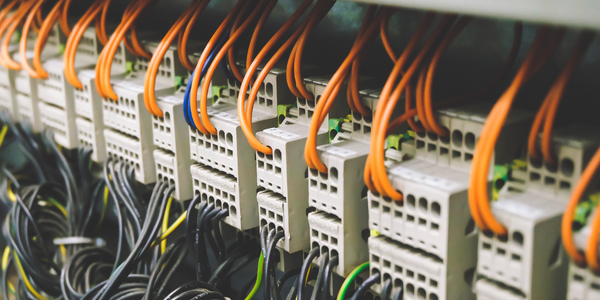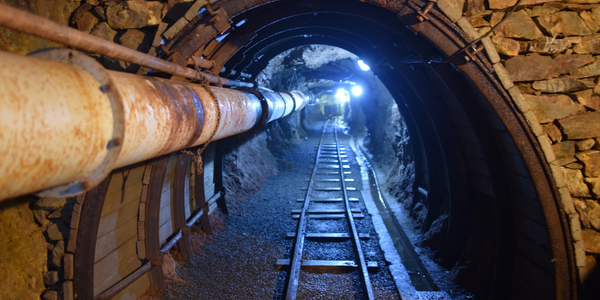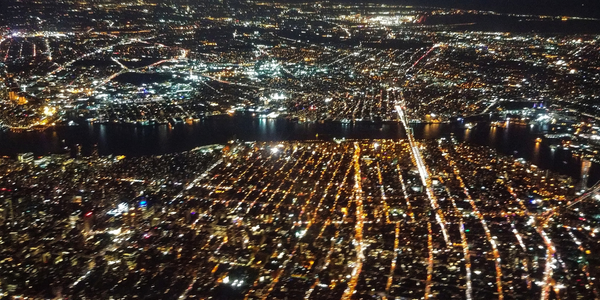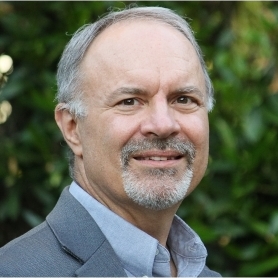RTI
您的系统。作为一个工作。
概述
|
总部
美国
|
成立年份
1991
|
公司类型
私营公司
|
收入
$10-100m
|
|
员工人数
51 - 200
|
网站
|
推特句柄
|
公司介绍
RTI 为工业物联网(IIoT) 提供连接平台。 RTI 的解决方案跨越现场、雾和云。它的可靠性、安全性、性能和可扩展性在最苛刻的工业系统中得到了证明。部署的系统包括医疗设备和成像;风能、水能和太阳能;自主飞机、火车和汽车;交通管制;油和气;机器人、船舶和国防。 RTI 是最大的基于 Object Management Group (OMG) Data Distribution Service™ (DDS) 连接框架的产品供应商。
物联网解决方案
主要客户
奥迪、西门子、通用电气、大众汽车、Joy Global、BK Medical、DocBox、欧洲航天局、Insitu、洛克希德马丁、美国宇航局人类探索远程机器人 (HET)

Supplier missing?
Start adding your own!
Register with your work email and create a new supplier profile for your business.
实例探究.

Case Study
Siemens Wind Power
Wind provides clean, renewable energy. The core concept is simple: wind turbines spin blades to generate power. However, today's systems are anything but simple. Modern wind turbines have blades that sweep a 120 meter circle, cost more than 1 million dollars and generate multiple megawatts of power. Each turbine may include up to 1,000 sensors and actuators – integrating strain gages, bearing monitors and power conditioning technology. The turbine can control blade speed and power generation by altering the blade pitch and power extraction. Controlling the turbine is a sophisticated job requiring many cooperating processors closing high-speed loops and implementing intelligent monitoring and optimization algorithms. But the real challenge is integrating these turbines so that they work together. A wind farm may include hundreds of turbines. They are often installed in difficult-to-access locations at sea. The farm must implement a fundamentally and truly distributed control system. Like all power systems, the goal of the farm is to match generation to load. A farm with hundreds of turbines must optimize that load by balancing the loading and generation across a wide geography. Wind, of course, is dynamic. Almost every picture of a wind farm shows a calm sea and a setting sun. But things get challenging when a storm goes through the wind farm. In a storm, the control system must decide how to take energy out of gusts to generate constant power. It must intelligently balance load across many turbines. And a critical consideration is the loading and potential damage to a half-billion-dollar installed asset. This is no environment for a slow or undependable control system. Reliability and performance are crucial.

Case Study
Schneider Automation PLCs
Schneider Automation wanted a solution to its PLCs on the factory floor so that they can meet cost target for manufacturing systems. The challenges were that the solution needed to connect smaller PLCs and embedded devices that have limited storages or processing capacities.
-Ground-Control-Station-(GCS).png)
Case Study
Unmanned Aircraft Systems (UAS) Ground Control Station (GCS)
General Atomics had to meet strict requirements for data bandwidth and availability. They could have designed and implemented a custom solution for data integration on their own, but that would have significantly delayed the project. Plus the lifecycle cost of developing and maintaining a custom software solution for a specific project can be enormous.

Case Study
Joy Mining Systems
Joy equipment faces many challenges. The first is machine integration and control. The business end of the machine has a rapidly-spinning cylinder with 6-inch diamond-studded cutting teeth. It chews through rock at rates measured in tens of tons per minute. The system grinds through the rock in front, creating a rectangular mine tunnel. Hydraulic lifters support the ceiling as the machine moves forward. Automated drills and screws drive 3-ft long screws into the ceiling to stabilize it. The rock and coal fall into a set of gathering "fingers" below the cutting cylinder. These fingers scoop up the rock and coal and deposit it onto a conveyor belt. The conveyor passes under the machine and out the back. A train of conveyor belt cars, up to a mile long, follows the cutter into the mine. The rock shoots along this train at over 400 feet per minute until it empties into rail cars at the end. Current systems place an operator cage next to the cutter. Choking dust (potentially explosive), the risk of collapse and the proximity of metal and rock mayhem make the operator cage a hazardous location.

Case Study
IIC Communication & Control Testbed for Microgrid Applications
Traditional central-station power grids operate on 15-minute output update cycles that force operators to over-generate power to compensate for potential blackouts or unexpected new power demands on the grid. Additionally, they cannot efficiently utilize the distributed, dynamic generation of renewable power sources such as solar panels or wind turbines.

Case Study
Distributed Systems for Medical Ultrasound
As a large distributed system scales, the ability to simultaneously maintain or enhance performance and reliability creates its own set of unique challenges. How do you address the distributed future, ensure you learn from your past experiences and build on the investments customers have already made? The challenges are real, and in the process of overcoming them BK Medical is building healthcare systems that are more cost effective, and provide greater integration into the patient care systems to facilitate improved decision making for doctors.

Case Study
Volkswagen V-Charge Collaboration: Driverless Valet Parking
In research programs, the compute intensity of any specific module cannot be determined ahead of time and is subject to continuous change; the ability of one compute engine to manage its load cannot be determined until runtime. The infrastructure needs to provide clear feedback when communication deadlines are not being met byconnected modules. This requires the ability to rapidly and easily reallocate modules to networked nodes. In other words, modules should be able to be reorganized around the distributed architecture without the time and effort of reconfiguring the underlying network integration. This way, researchers can stay focused on application level issues rather than dealing with system architecture problems created by changes in systems integration.

Case Study
City of Tokyo Metropolitan Highway Line
The city needed a low maintenance, highly reliable communications system that was sufficiently robust for the delivery of constant updates to the kiosks. One of the problems facing the developers was that the environment in which these connections are maintained runs the gamut: under roadways and rail lines, next to hot cabling in the transit system through a variety of soil and wetness conditions. Depending on weather conditions, the transmission capabilities of the various physical media can vary widely.




